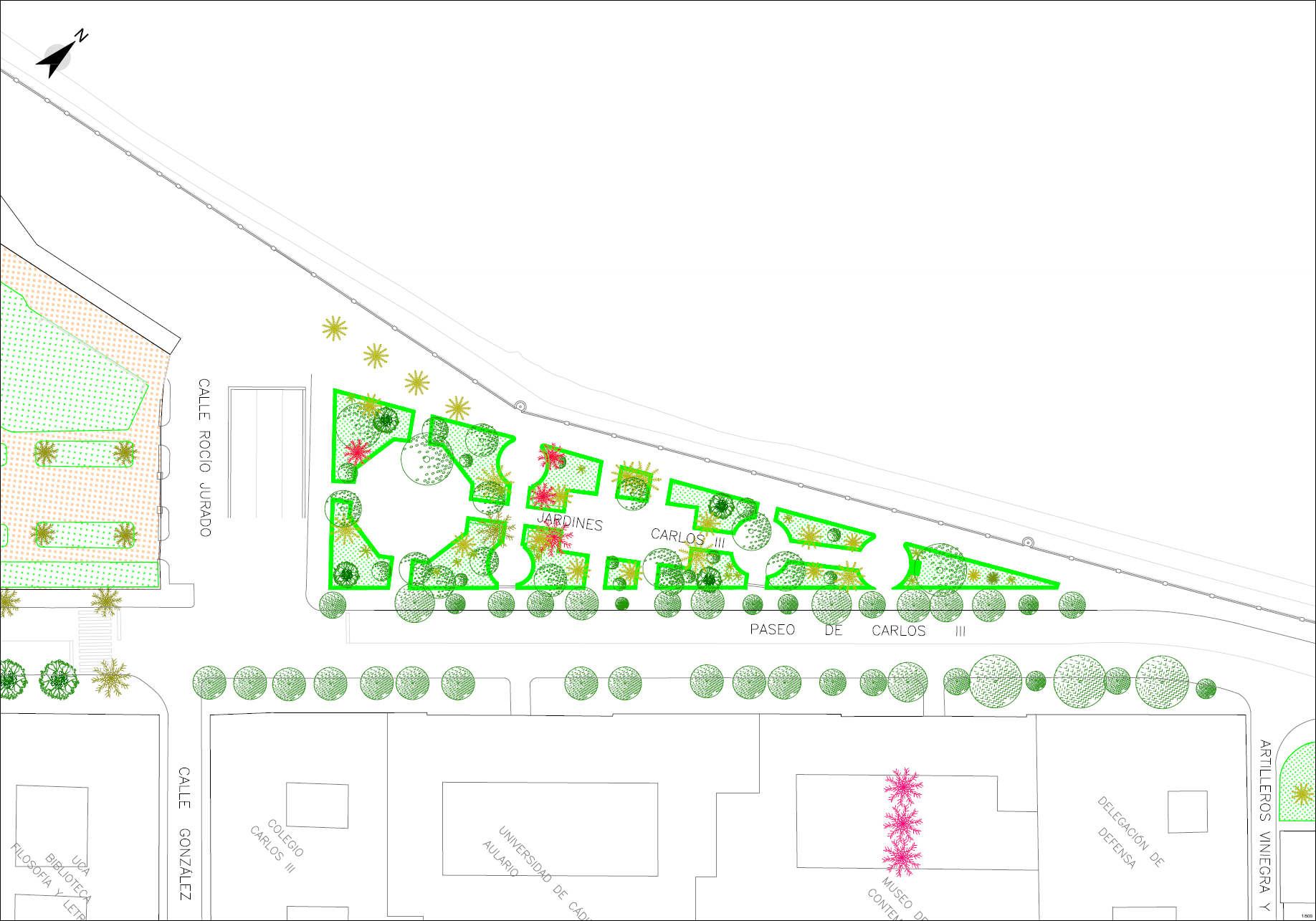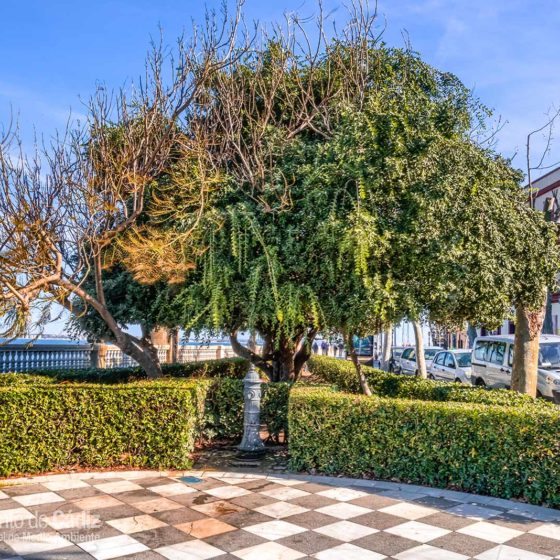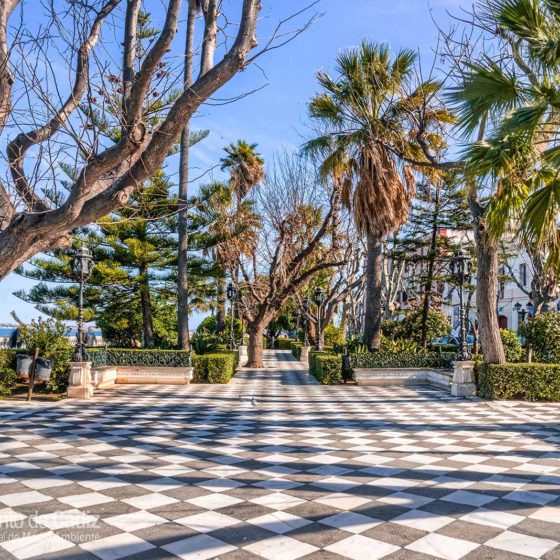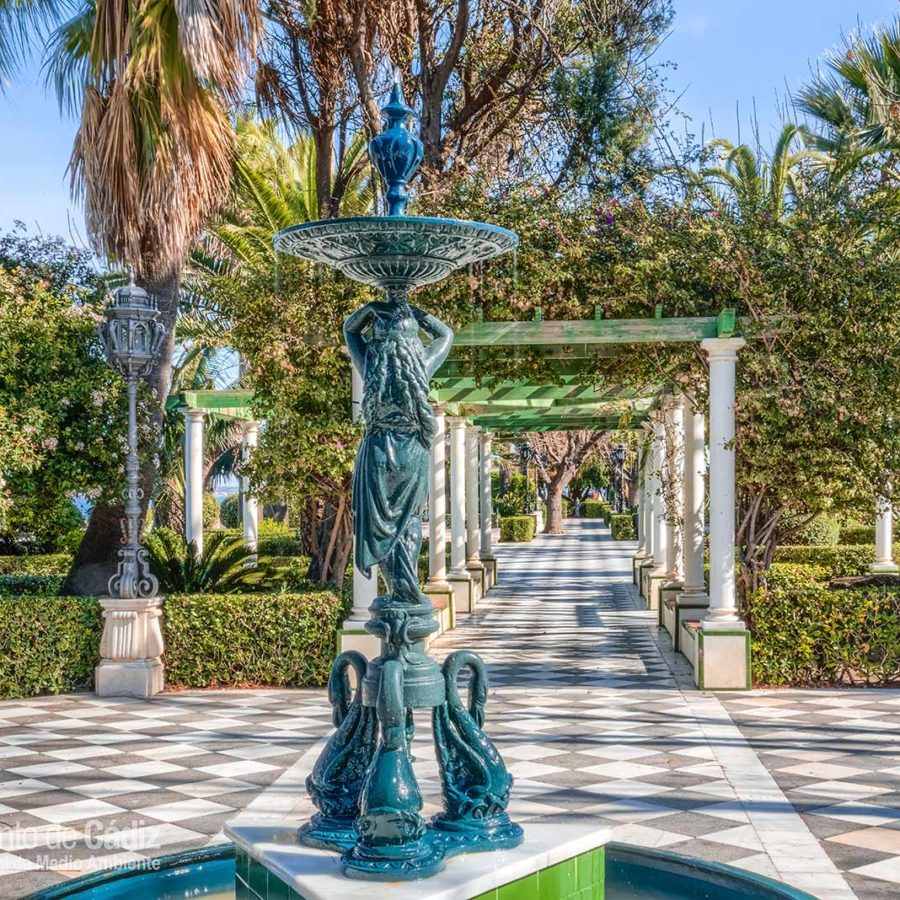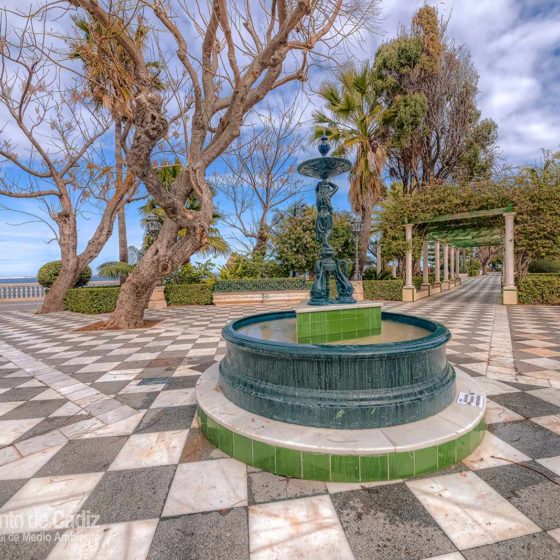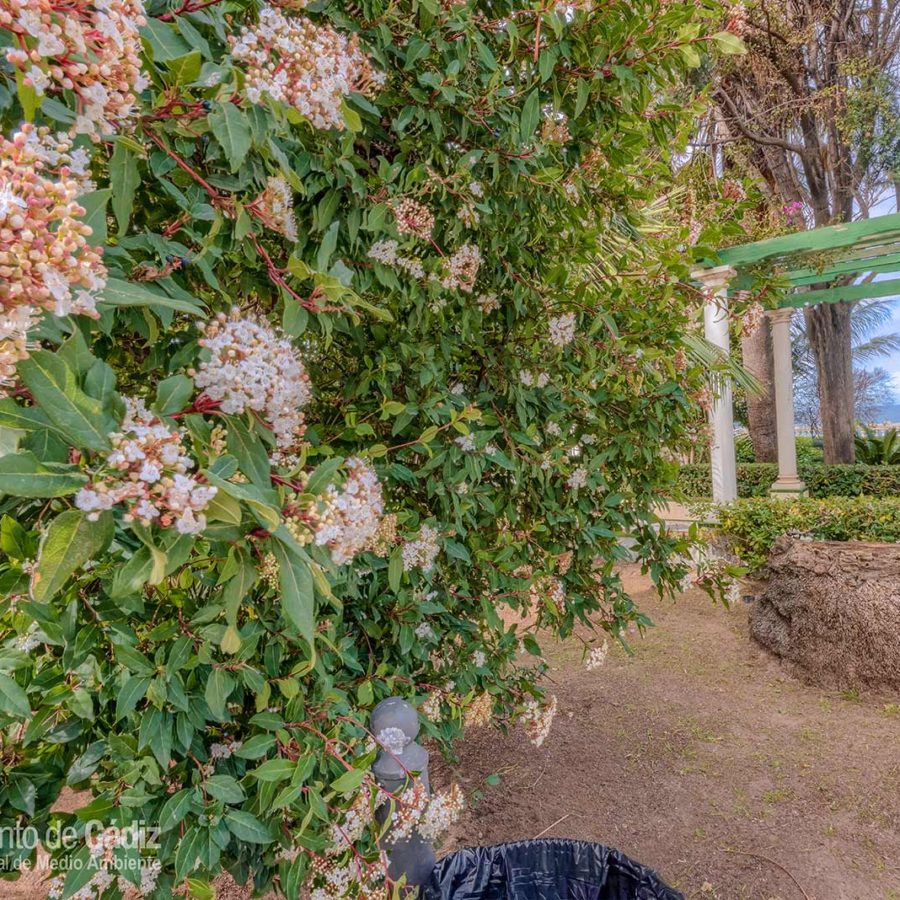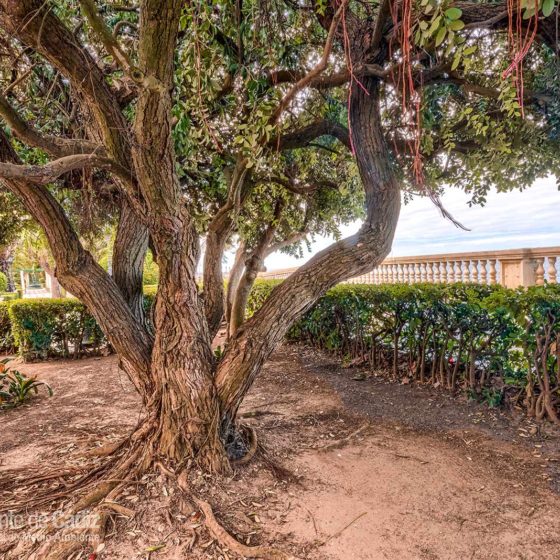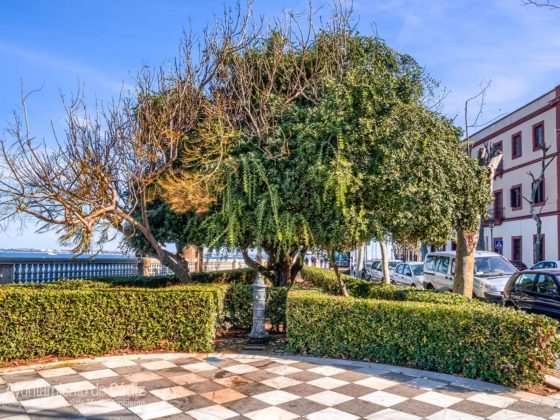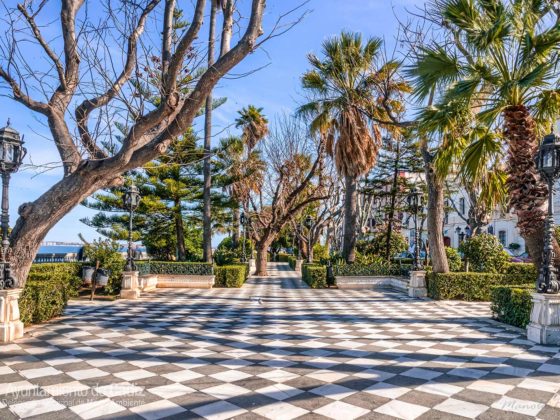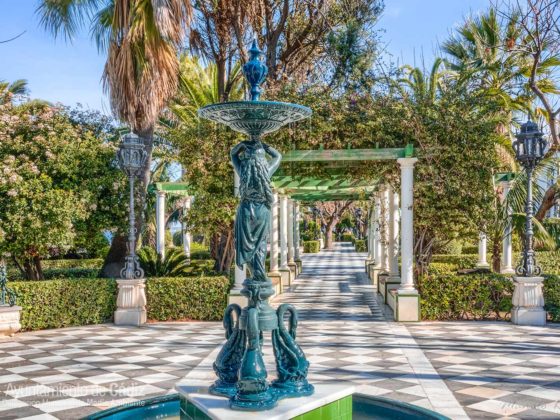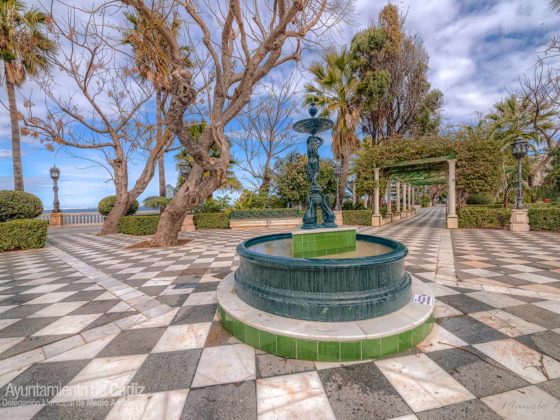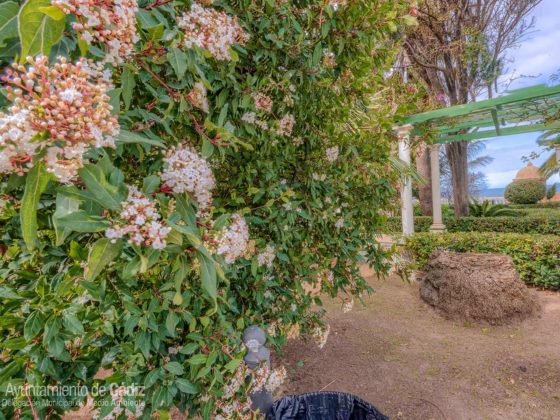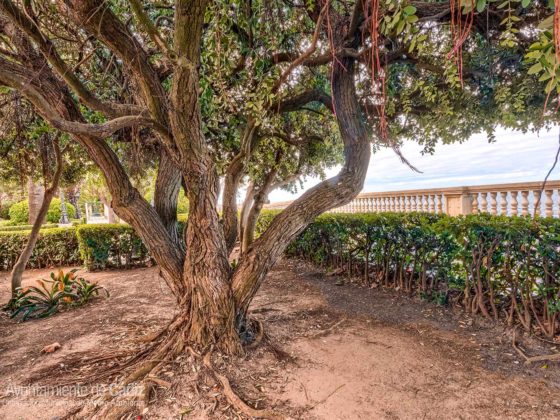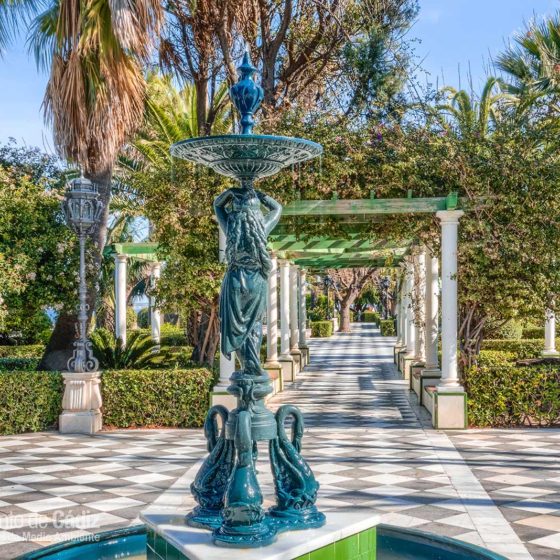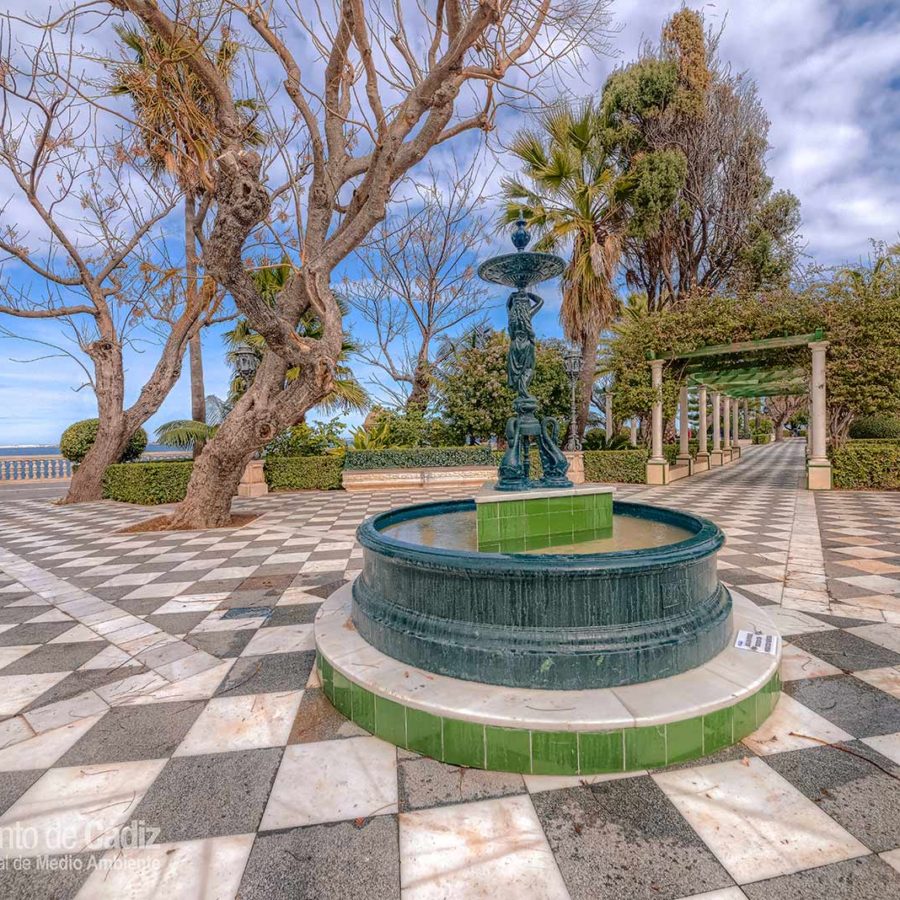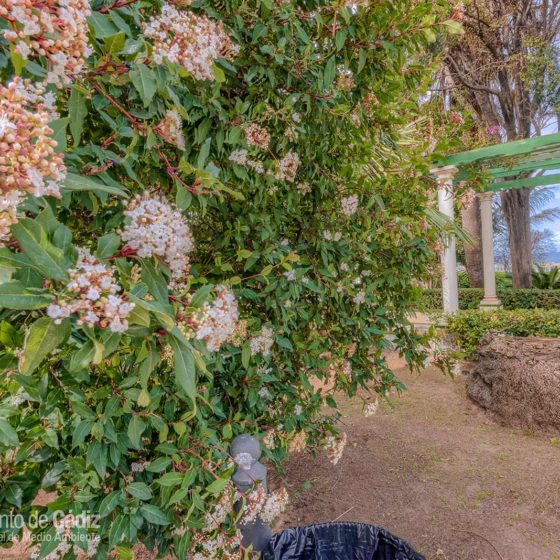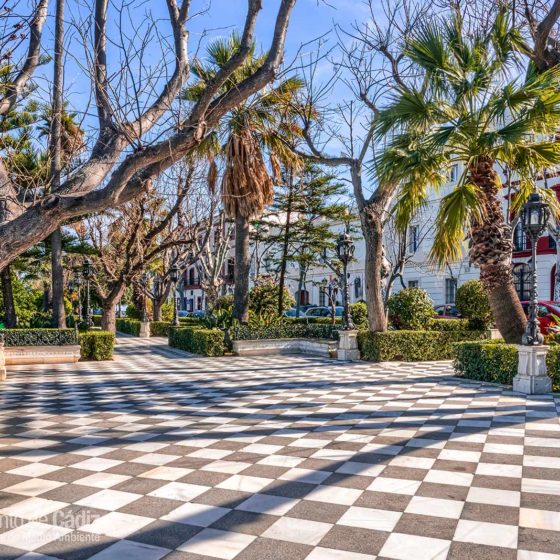It constitutes a continuous garden that runs parallel to the walk along the sea
Along this walk we can find balustrades, lampposts and sentry boxes (escaragüitas).
The Walk
Botanical Species
The Walk
The current Walk dates from 1927 and its origin corresponds to the progressive occupation of the military security space of the walled perimeter of Cadiz. The current architecture is the work of the architect Juan Talavera y Heredia, the same architect that was in charge of the remodelling of the Gardens of Alameda Apodaca and Marques de Comillas. Its design follows the line created by the Alameda, executed in the same regionalist style of the Alameda. In fact, the sequence of the gardens is repeated, with walks on the walls and a succession of roundabouts and zones linked by walkways covered, on some occasions, by pergolas, as well as the type of furniture used, based on the Triana ceramics with wrought iron elements.
It was declared by the Junta de Andalucía as an Asset of Cultural Interest (BOJA 19/3/2004) and is included in the General Catalogue of the Historical Heritage of Andalusia.
Its current shape is triangular, with its base just in front of the park entrance. It consists of a first open space of polygonal floor with a small central fountain and benches on the sides of the polygon. From this space, a path covered by pergola opens, with lateral exits to small circular roundabouts, which communicate with the second open space of the garden, this square floor surrounded by hedges, with benches on the corners and double lateral exits.
In the interior of the garden a central axis is clearly distinguished, with different squares, four round ones, a rectangular one and another wider, octagonal one with a fountain in its centre.
Botanical Species
The outer perimeter that faces the road is bordered by a walk of London Plane trees (Platanus hybrid).
Each flowerbed is bordered by a permeable hedge of Pittosporum (Pitosporum tobira).
Among the outstanding tree species that can be found in this space are:
|
The Dragon Tree (Dracaena draco) Honey Locust (Gleditsia triacanthos) New Zealand Fire Tree (Metrosideros tomentosa) The Chinaberry Tree (Melia azederah) |
|
The Jacaranda (Jacaranda mimosifolia) The Bunya Pine (Araucaria bidwilli) The Bull Bay tree (Magnolia grandiflora) The Black Locust (Robinia pseudoacacia) |
As well as having different types of Palm Trees:
|
The Chinese Fan Palm (Livistona chinensis) Kentia Palm (Howea forsteriana) Date Palm (Phoenix dactylifera) The Desert Fan Palm (Whashingtonia robusta) Canary Palm (Phoenix canariensis) |
The pergolas are covered by climbing species such as Bougainvillea glabra (sometimes referred to as paper flower), Cape Honeysuckle, Trumpet Vines and Bignonias.
The most remarkable botanical species of the Paseo de Carlos III are, among others:
|
Araucaria heterophylla Berberis thumbergii Bougainvillea glabra Ficus elástica Coporsma baueri Cupressus macrocarpa Gleditsia triacanthos |
|
Jacaranda mimosifolia Ligustrum japonicum Howea forsteriana Livistona chinensis Melia azedarach Metrosideros tomentosa Myoporum acuminatum |
|
Nerium oleander Robinia pseudoacacia Platanus hybrida Tamarix gallica Platanus hybrida Phoenix canariensis Phoenix dactylifera |
|
Pitosporum tobira Robinia pseudoacacia Strelitzia reginae Tamarix gallica Washingtonia filifera Washingtonia robusta Yucca alifolia Yucca elephantipes |


